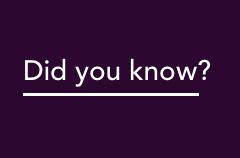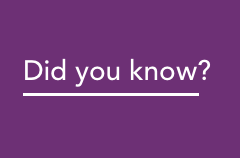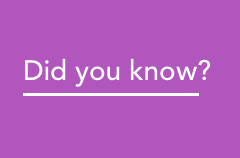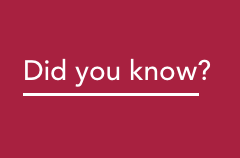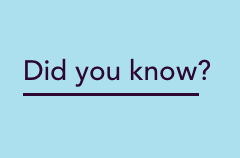Legislation and regulation
Australia’s energy system operates within a legislative and regulatory framework that seeks to promote the efficient investment, operation and use of energy services for the long-term interests of consumers in relation to price, quality, safety, reliability and security.
The framework includes national laws, regulations and rules – which, as energy policy is the domain of the states, and must be applied at state and territory level – as well as guidelines, standards and procedures. AEMO’s role and functions are prescribed in the national energy laws.
Electricity regulation
The electricity system and markets in most Australian states and territories is governed by the National Electricity Law (NEL) and the National Electricity Rules (NER). Western Australia has a similar, but separate, legislative framework.
National Electricity Law (NEL)
The NEL is contained in a Schedule to the National Electricity (South Australia) Act 1996. It establishes the governance framework and key obligations for the National Electricity Market (NEM), including AEMO’s role and functions, as well as the regulation of access to electricity networks. It is supported by the National Electricity (South Australia) Regulations.
The NEL is applied as law in New South Wales, Queensland, Victoria, South Australia, Tasmania and the Australia Capital Territory by application statutes. The Northern Territory has also applied the NEL with variations that cater to local requirements.
National Electricity Rules (NER)
The National Electricity Rules are made under the NEL and govern the operation of the NEM. They determine how companies can operate and participate in the competitive generation and retail sectors, and also govern the economic regulation of electricity transmission and distribution networks.
Among other functions, they provide the regulatory framework and processes for market operations, power system security, network connections and access, pricing for network services in the NEM and national transmission planning. In Victoria, however, the national rules for network connections are modified, with many of the network service provider roles being assigned to AEMO.
NEM procedures are made under the NER.
Electricity Industry Act (WA)
WA’s Wholesale Energy Market (WEM) is established under the Electricity Industry Act 2004 and the Electricity Industry (Wholesale Electricity Market) Regulations 2004.
Wholesale Electricity Market (WEM) Rules (WA)
WA’s Wholesale Electricity Market Rules guide the operation of the WEM, including the trading and dispatch of energy, the Reserve Capacity Mechanism and settlement. They also outline the roles and functions of governance bodies, including AEMO.
WEM procedures are made under the WEM Rules.
Gas regulation
Australia’s gas pipelines and markets are governed by the National Gas Law (NGL) and National Gas Rules (NGR). While WA participates in the NGL and NGR, it also has additional legislation and rules as part of its Gas Services Information (GSI) framework.
National Gas Law (NGL)
The NGL is contained in the Schedule to the National Gas (South Australia) Act 2008. It establishes the governance framework and key obligations relating to the access to gas pipelines, including AEMO’s role and functions; it also establishes a gas market bulletin board. It is supported by the National Gas (South Australia) Regulations.
The NGL applies in NSW, Queensland, Victoria, SA, Tasmania, ACT and NT, as well as the Commonwealth. In 2010, WA adopted a modified version of the NGL through complementary legislation, the National Gas Access (WA) Act 2009.
National Gas Rules (NGR)
The National Gas Rules are made under the NGR. They govern access to natural gas pipeline services, as well as broader elements of the natural gas markets. The NGR also set out processes by which the gas markets are operated, and the responsibilities and obligations of market participants.
Gas market procedures are made under the NGR.
Gas Services Information Act (WA)
WA’s Gas Services Information Act and the Gas Services Information Regulations 2012 were created to improve security and the transparency of information in the WA gas market, and to facilitate competition. They establish the WA Gas Bulletin Board (WA GBB) and the WA Gas Statement of Opportunities (WA GSOO).
Gas Services Information Rules (WA)
WA’s Gas Services Information Rules govern the operation of the WA GBB and the preparation of the WA GSOO, and outline the roles and functions of governance bodies, including AEMO.
GSI procedures are made under the Gas Services Information Rules.
Additional information
Energy retail regulation
The supply and sale of gas and electricity to retail customers is governed by the National Energy Customer Framework. This suite of legal instruments includes the National Energy Retail Law (NERL) and the National Energy Retail Rules (NERR).
National Energy Retail Law (NERL)
The NERL is contained in the Schedule to the National Energy Retail Law (South Australia) Act 2011, which regulates the supply and sale of gas and electricity from retailers and distributors to customers. It is supported by the National Energy Retail Regulations.
The law has been applied in New South Wales, Queensland, South Australia, Tasmania and the Australian Capital Territory. Victoria, Western Australia and the Northern Territory have not applied the NERL. In Victoria, however, both the Electricity Industry Act 2000 and Gas Industry Act 2001 contain similar provisions to the NERL.
National Energy Retail Rules (NERR)
The National Energy Retail Rules are made under the NERL. They provide detailed information about consumer protection measures and model contract terms and conditions. They also facilitate the provision of electricity and gas services to retail customers, including customer connections, retail competition, and basic terms and conditions contained in retail contracts. Most rules are focused on small customers, including residential.
Rules relating to retail are also included in the National Electricity Rules and the National Gas Rules.
The Australian Energy Regulator (AER) publishes guidelines made under the NERR.

